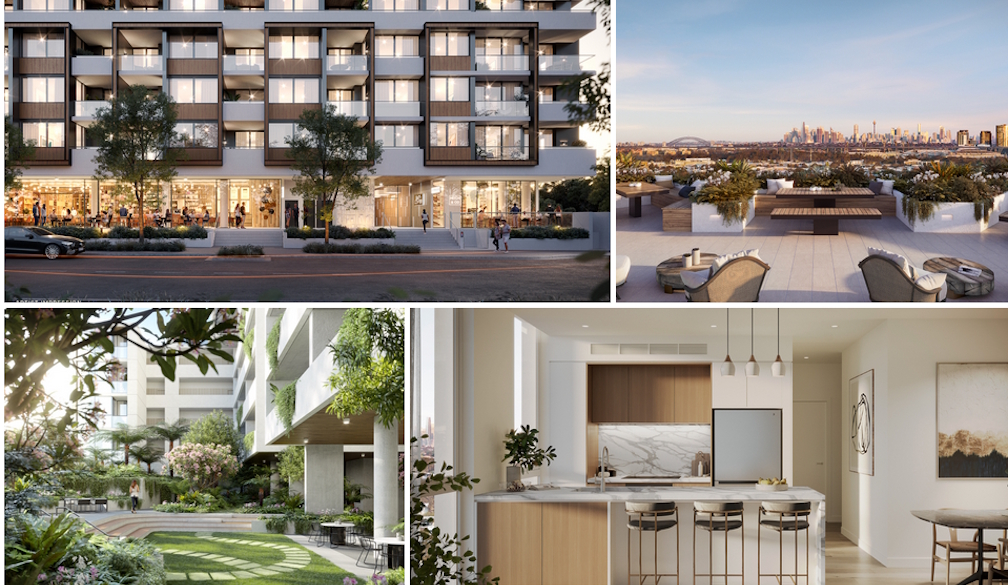Baby boomers are driving development feasibility leading to larger apartments
- Written by Nigel Farquhar, Head of Development at Ellipse Property

As residential developers continue to grapple with feasibility issues on apartment projects, the sector is struggling to deliver volumes of new stock, while our planning system does little to speed up approval rates and increase housing supply. Builder-developers have stepped into the void to help alleviate the housing crisis, delivering a majority of Sydney’s new residential projects - often backed by non-bank lenders and private credit.
The rise of the builder-developer has aligned with the growth of non-bank lenders, with a cautious lending environment reducing liquidity and appetite for residential construction lending amongst major banks over the last few years.
While a compelling way forward during the housing crisis, private credit and pre-sale commitment hurdles have created a market dominated by large three- and four-bedroom luxury apartments, catering to the groundswell of downsizing Baby Boomers – with affordable stock in increasingly limited supply.
The costs of land, labour and materials have escalated in the post-pandemic era, squeezing the feasibility of new residential projects and leading to caution amongst lenders. The additional cost of private credit versus major banks has exacerbated cost of projects. According to a 2025 survey by Stamford Capital, almost half of all NSW lenders surveyed are examining builders’ iCIRT ratings and 40% have rejected a loan application on the grounds of a poor or non-existant iCIRT rating.
This has skewed feasibility toward higher-priced residential developments, mostly those targeting empty-nesters and downsizers, who make up around 25% of our population in Sydney.
First home buyers have faced dwindling options as a result, and have been largely priced out of the market by the combined impacts of higher interest rates and cost-of-living pressures. It has created a market for asset-rich owner-occupiers while investors lay dormant, waiting for a lower interest rate environment and cheaper priced stock.
Project timelines are further extending as pre-sale targets become more challenging to meet. Off-the-plan downsizer buyers are typically more comfortable to purchase when construction is underway - seeking greater certainty and adequate time to sell their home.
Private credit unlocks crucial early-stage project funding for builder-developers, allowing residential projects to start with fewer pre-commitments while meeting continued market demand for larger dwellings.
This dynamic has emerged within a period of low residential development activity, brought about by the sharp decline in third-party builders who deliver Class 2 apartment buildings. New apartment dwelling commencements have been trending downward for years, and according to the most recent ABS building data, just 14,196 apartment dwellings commenced construction nationwide into the December 2024 quarter - 5.6% less than the previous quarter.
The decline of third-party builders is particularly noticeable in NSW, due to the structural shift toward compliance with higher building standards and greater accountability driven by the introduction of the iCIRT rating system. As the number of apartment projects shrinks, larger sales agencies are also reducing their service offering, exemplified by CBRE shifting its focus to alternative markets as of March this year.
Coupled with this, many developers and builders have flocked to more attractive cap rates and less complex builds and regulation associated with booming property sectors like industrial and logistics, exacerbating the drop in new dwelling commencements.
Amid these challenges, the builder-developer model has surged ahead, and this has been particularly noticeable within the last five to seven years. Battling project feasibilities, tighter compliance controls and increasing borrowing costs, the builder-developer model presents a solution that de-risks residential projects and optimises profit.
While there are fewer new residential projects underway in Sydney, the ones being built are mostly by builder-developers – including the likes of Billbergia, Deicorp, Coronation, Mirvac, Meriton, DASCO, TQM and Ellipse Property.
For now, land use regulations and the planning system remain another significant barrier to the delivery of new housing stock. Positive State Government initiatives and policy reforms, such as the State Significant Development (SSD) pathway and Housing Australia Future Fund (HAFF), can help boost supply and deliver affordable product – but the true impact of these policies is yet to be seen.
It should be noted that the SSD pathway must be adequately resourced to account for the influx in applications, without burdening local Councils or the NSW Land and Environment Court. Without these resources, the delivery of adequate affordable housing is at stake.
Momentum has gathered pace with increasing EOI submissions to the Housing Delivery Authority (HDA), and as a result, assessments are being pushed out from six to 12 weeks. It’s now taking even longer to get to the starting line, with the Government issuing SEARs (Secretary’s Environmental Assessment Requirements) list and commencing the 270-day NSW Planning Assessment target approval period. Compounding this, there are on-going resourcing issues, with a shortage of consultants within the NSW Planning Department.
There will be further delivery challenges ahead for the LMR (Low-Mid Rise housing policy) zoned land planning pathway, particularly around approval speed. Projects under $70 million that aren’t considered as HDA/SSD projects, will continue to face the challenges of Councils LEP and DCP not matching up with the intent of the LMR policy. While the non-refusal based on FSR and Height helps, it does not go far enough to advance a stronger approval pathway.
Approvals will still be scuppered by Interim Heritage Orders latently placed on by Council, view-sharing debates within the community, and setback compliances. There will be many developers ready to take the Land & Environment Court (LEC) pathway on refusal, so yet another budget is needed - and the backlog in the LEC system will continue.
Our industry has a way to go toward dealing with the housing crisis and there is no “one size fits all” solution. A holistic pathway needs to be developed with a multi-disciplinary approach and greater collaboration between lenders, policymakers and developers to ensure the right balance of new stock is delivered to market with reasonable pace.
Meanwhile, with development viability hard to “stack up” amid high land and construction costs, Baby Boomer demand shows no sign of slowing – leading many builder-developers to continue banking on private credit.
About Ellipse Property
Ellipse Property, the development arm of Decode Group, was launched in 2016 with a vision to create exceptional living spaces that blend design excellence with prime value growth. Since its inception, Ellipse has successfully delivered 8 projects and has 2 more in the pipeline, setting the stage to deliver over 1,000 homes in the next 2–5 years.
Guided by a commitment to innovation and quality, Ellipse Property focuses on crafting thoughtfully designed homes that cater to diverse lifestyles. From downsizers seeking luxury and convenience to growing families embracing space and functionality, each project reflects a dedication to enhancing modern living.
Key developments like Carrington Place, with its unique connection to nature and active living, and East+Cowper, a landmark urban project in Granville, NSW, highlight Ellipse’s expertise and vision. Backed by Decode Group’s legacy of excellence, Ellipse partners with industry leaders to deliver sustainable, high-quality communities.
At Ellipse Property, we’re not just building homes; we’re shaping vibrant communities and unlocking refined living for generations to come.
https://www.ellipseproperty.com.au/








